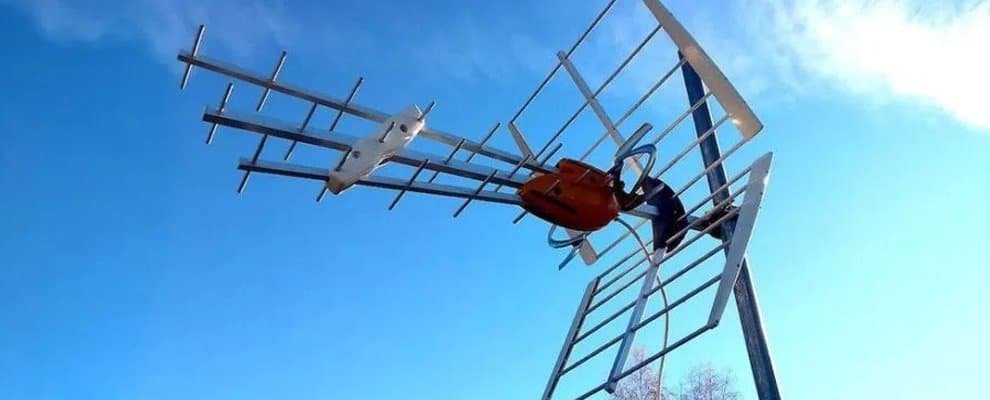What is the best height for an antenna?

30
Jun
 Coaxial Cable Assembly
Coaxial Cable Assembly
 Microwave Test Cable
Microwave Test Cable
 Coaxial RF Connector
Coaxial RF Connector
 Coaxial RF Adapter
Coaxial RF Adapter
 Coaxial RF Termination
Coaxial RF Termination
 Coaxial RF Test Probe
Coaxial RF Test Probe
 Coaxial RF Attenuator
Coaxial RF Attenuator
 RF Switches
RF Switches
 Coaxial RF Power Dividers
Coaxial RF Power Dividers
When setting up an antenna, one question stands out: what’s the best height to ensure optimal performance? Whether you’re comparing SMA vs BNC connectors for your setup or aiming for maximum signal range, antenna height plays a pivotal role. This article dives into the challenge of finding the ideal height, analyzes the key factors, and offers practical solutions. Tools like the antenna height calculator can simplify this process, making it easier for businesses to achieve reliable signal coverage.
Antenna height directly affects signal quality and range. Too low, and obstacles like buildings or trees block the signal. Too high, and you risk signal loss from long cables or misalignment. For B-end users—think telecom providers or broadcasters—this balance is critical. The antenna height calculator becomes a go-to tool here, helping you pinpoint the height needed for your specific setup, whether it’s a TV tower or a radio station.
The challenge? There’s no one-size-fits-all answer. Height depends on your environment, antenna type, and goals. Let’s break it down.
To determine the best antenna height, you need to consider several variables. Here’s what matters most:
The frequency your antenna uses dictates how height impacts performance. Higher frequencies (shorter wavelengths) are more prone to obstruction. An RF Distance Calculator can estimate how far your signal travels based on height, giving you a clearer picture of what’s needed.
Urban areas with tall buildings require higher antennas to clear obstructions. Rural setups might not need as much elevation. Tools like the antenna height range calculator factor in terrain and obstacles, offering tailored height suggestions.
Different antennas—omnidirectional or directional—perform best at different heights. For example, a TV antenna might need precise placement for local broadcasts. A tv antenna height calculator can recommend heights based on your antenna’s specs and location.
Height isn’t just about the antenna itself. Longer coaxial cables can weaken signals. Use a Coaxial Cable Calculator to ensure your cable length supports your height without compromising quality.
So, how do you find the perfect height? Follow these steps to get it right:
Start with your antenna type and purpose. A radio station might use a radio antenna height calculator for broad coverage, while a TV provider focuses on local signal strength. Knowing your needs sets the foundation.
Map out nearby obstacles—buildings, hills, or forests. In dense areas, aim higher to maintain line-of-sight. The antenna height calculator can adjust for these conditions, ensuring accuracy.
Input your data into tools like the antenna height range calculator or RF Distance Calculator. These provide a starting point. Install the antenna, test the signal, and tweak the height as needed. Small adjustments can make a big difference.
Balance height with cable length. A Coaxial Cable Calculator helps you avoid signal loss, ensuring your setup performs at its peak.
For B-end users, getting antenna height right isn’t just technical—it’s strategic. Poor signal quality can disrupt operations, frustrate clients, and hurt your bottom line. Using an antenna height calculator and related tools ensures you deliver reliable service, whether it’s broadcasting, telecom, or data transmission. Plus, a well-optimized setup can set you apart from competitors.
The best height for an antenna isn’t a fixed number—it’s a solution tailored to your frequency, environment, and equipment. Tools like the antenna height calculator, tv antenna height calculator, and radio antenna height calculator take the guesswork out of the process. Pair them with an RF Distance Calculator and Coaxial Cable Calculator for a complete approach. Ready to optimize your antenna setup? Reach out for expert guidance and turn signal challenges into opportunities.
 Coaxial Cable Assembly
Coaxial Cable Assembly
 Microwave Test Cable
Microwave Test Cable
 Coaxial RF Connector
Coaxial RF Connector
 Coaxial RF Adapter
Coaxial RF Adapter
 Coaxial RF Termination
Coaxial RF Termination
 Coaxial RF Test Probe
Coaxial RF Test Probe
 Coaxial RF Attenuator
Coaxial RF Attenuator
 RF Switches
RF Switches
 Coaxial RF Power Dividers
Coaxial RF Power Dividers Coaxial Cable Assembly
Coaxial Cable Assembly
 Microwave Test Cable
Microwave Test Cable
 Coaxial RF Connector
Coaxial RF Connector
 Coaxial RF Adapter
Coaxial RF Adapter
 Coaxial RF Termination
Coaxial RF Termination
 Coaxial RF Test Probe
Coaxial RF Test Probe
 Coaxial RF Attenuator
Coaxial RF Attenuator
 RF Switches
RF Switches
 Coaxial RF Power Dividers
Coaxial RF Power DividersNo account yet?
Create an Account